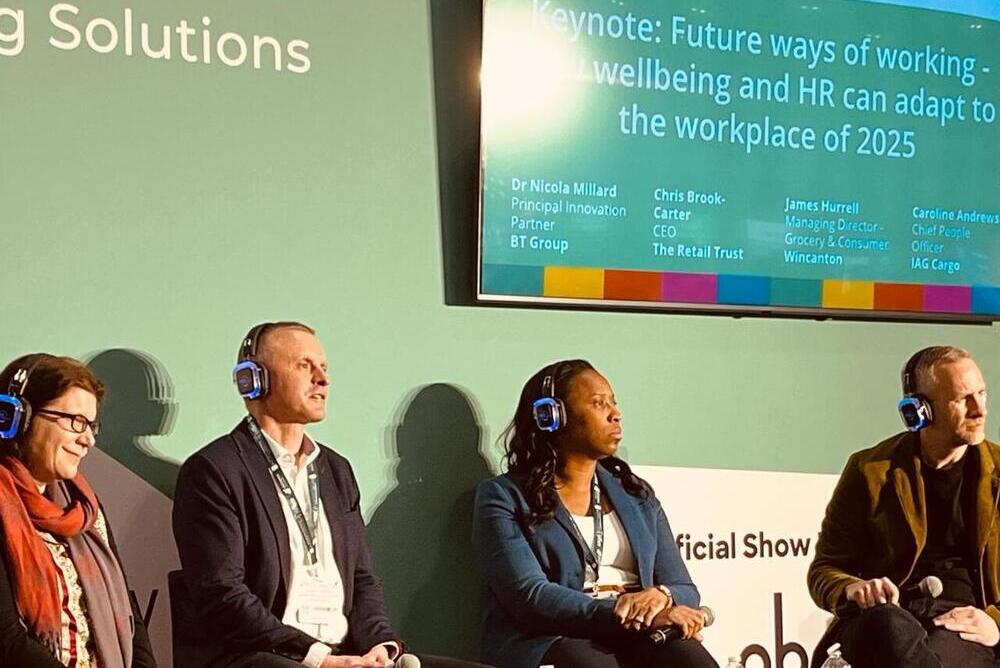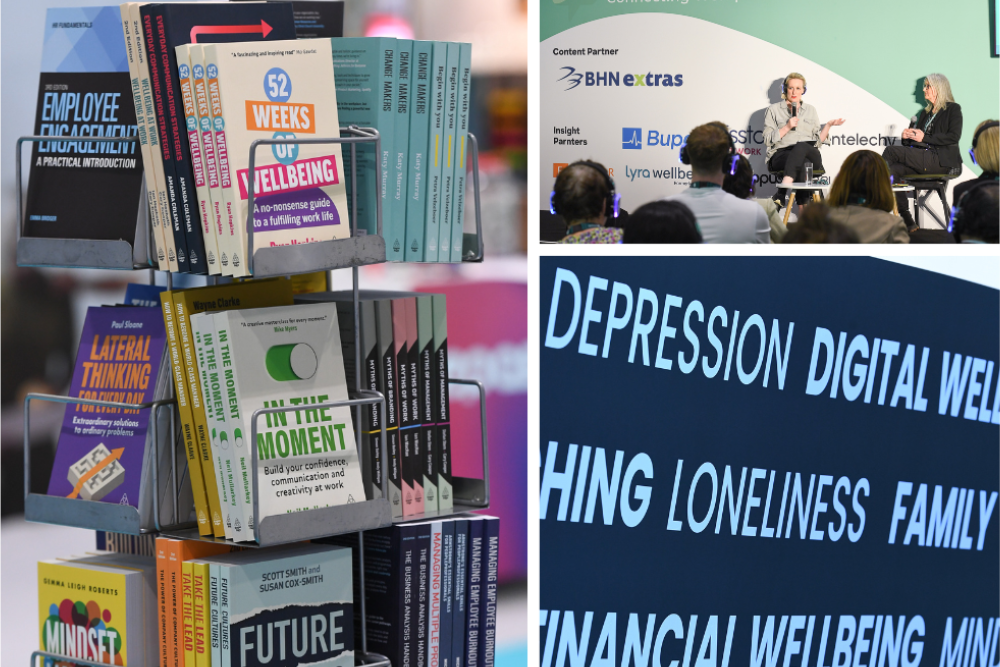I had a conversation recently with the head of wellbeing for one of the UK’s major banks. Discussing the evolution of workplace wellbeing. We reflected on how far we’ve come from a time, 20 years ago, when few if any organisations had a wellbeing strategy, or indeed anything resembling a coherent approach.
The discussion was one of many I was having with the wellbeing leads from UK banks, that formed part of the Bank Workers Charity’s research into the state of wellbeing in the sector. They went on to describe their bank’s current approach as a maturity model of wellbeing –- a model that is constantly developing and being refined; one built on data and on solid foundations of internal and external research. This not only ensures that the bank’s strategy is evidence-based but that it’s designed around the specific and well understood needs of their workforce.
The wellbeing journey
I’ve been working in the wellbeing field for thirty years and it’s been fascinating to see how organisational attitudes to it have transformed. 20 years ago, employee engagement, not wellbeing was the overriding people priority for most employers. Wellbeing barely registered on the business agenda. How things have changed.
An abundance of research testifying to the productivity benefits of high levels of wellbeing, means that companies are prioritising it like never before. It is seen as an essential contributor to organisational culture and companies are continuing to increase their commitment, financially and in terms of internal focus.
Crucially, our understanding of wellbeing and the factors that influence it, is now at an altogether higher level. And that has resulted in the creation of wellbeing strategies like the one described above, that are evidence based, data driven and built upon a thoroughly researched understanding of employee needs.
A major bank priority
For many years, banks have been at the forefront of best practice in wellbeing. They were among the first businesses to shift from offering a motley array of wellbeing programmes, managed by different parts of the business – to taking a structured approach, where responsibility for the work was vested in a particular business area, usually HR. They were also among the first UK businesses to develop wellbeing strategies, a key step in establishing it as a permanent feature of the organisational infrastructure.
The strategy as a living document
But things have moved on again and, as we’ve seen, wellbeing strategies have become more sophisticated and informed by an abundance of research. It’s not enough to have a strategy in place – the strategy can never be static – it needs to be a living document, that evolves to reflect changes in employee needs.
Perhaps it’s worth reminding ourselves that even something as fundamental as financial wellbeing is a relatively recent addition to the wellbeing architecture. For many organisations it took the devastating impact of Covid and the cost-of-living crisis to merit its inclusion as a staple in their wellbeing offer.
But what we’ve also seen is a major effort within banks to develop a better understanding of the needs and preferences of their people. Through internal surveys and through focus groups, insights are gathered that inform decisions about which wellbeing choices to prioritise. And that in turn has resulted in a much closer alignment between the wellbeing programmes available and the changing needs of the workforce.
This, together with the banks’ deeper and more nuanced understanding of wellbeing conceptually, has resulted in the introduction of programmes that are more effective, that address real needs and that are genuinely innovative.
At the Bank Worker’s Charity, we’ve tried to capture some of the resulting diversity in approach, through the Banking Wellbeing Pulse, a report that explores the wellbeing landscape across the sector. Using case studies and drawing on conversations with wellbeing leads from different banks, we’ve tried to highlight some of the innovation we’re seeing. The focus of the report may be on UK banks, but we believe that by drawing attention to best practice wherever we see it, we’re providing insights that all sectors can benefit from.
Emerging issues
One of the most significant developments we’ve seen is the extent to which banks have engaged with what I would describe as emergent wellbeing issues. As a result their strategies are richer and more inclusive than ever before. Many of the concerns addressed simply wouldn’t have been considered relevant a few years ago.
The most obvious example is menopause, which banks, like many large corporations, have recently prioritised. Earlier than most, in 2019, Santander made the Peppy menopause app available to their people as a part of a comprehensive support package that included the creation of a cohort of menopause advocates.
Other examples are less obvious. UBS have introduced a very welcome package of support for dementia carers. This seems particularly forward thinking, because with a population that is living longer, this is an issue that will only affect more employees in the future. Several banks including Barclays, NatWest, Lloyds and HSBC have signed the “Working with cancer” pledge, committing to creating an open and supportive culture for those living with the disease. In some banks this is forming the basis of a much broader platform of support, including training for line managers and creating peer support groups that provide information and a safe place to share experiences.
At NatWest, an innovative package of measures around fertility saw them recognised as the best company for supporting fertility and pathways to parenthood. HSBC meanwhile produced a toolkit to address one of the biggest anxieties for nearly all carers – planning for the time when they, as a carer, would, no longer be around to support their dependent.
These are just a handful of ways in which we’ve seen banks expand the range of their wellbeing provision into exciting new areas and at the same time, create more inclusive support for their people.
The Banking Wellbeing Pulse Report
In the report we also highlight other examples using case studies to show how and why these programmes were introduced and the ways in which they’ve benefited participants.
The report comprises 6 sections. It can be read as a straightforward narrative, but each section is self-contained and can be read independently. Future editions will again feature innovative initiatives that will hopefully inspire others. Each will also contain a special report on a topical issue that is having a profound impact on the wellbeing of large numbers of people.
Almost inevitably, in the current edition we focus on the cost-of-living crisis, which continues to be the single biggest factor affecting wellbeing in the UK. The next edition will address what has become a major preoccupation for large numbers of employees, especially parents – the crisis in the mental health of children and young people.
Whilst creating the report it has been fascinating to observe the different journeys banks have taken to achieve their wellbeing goals. Of course, that is how it should be – every organisation’s approach should be unique, bult around their own distinct characteristics and needs. I’ll be following their progress with great interest.
Banking Wellbeing Pulse- the state of wellbeing report can be accessed online or downloaded, via this link: Banking Wellbeing Pulse – The Bank Workers Charity (bwcharity.org.uk)
About the author
Paul Barrett is the Head of Wellbeing for the Bank Workers Charity. He is an occupational psychologist with over 30 years’ experience in the wellbeing field. He is an established commentator on workplace wellbeing, writing for a range of HR journals as well as for financial sector publications like Financial News and Chartered Banker magazine.
You might also like:















